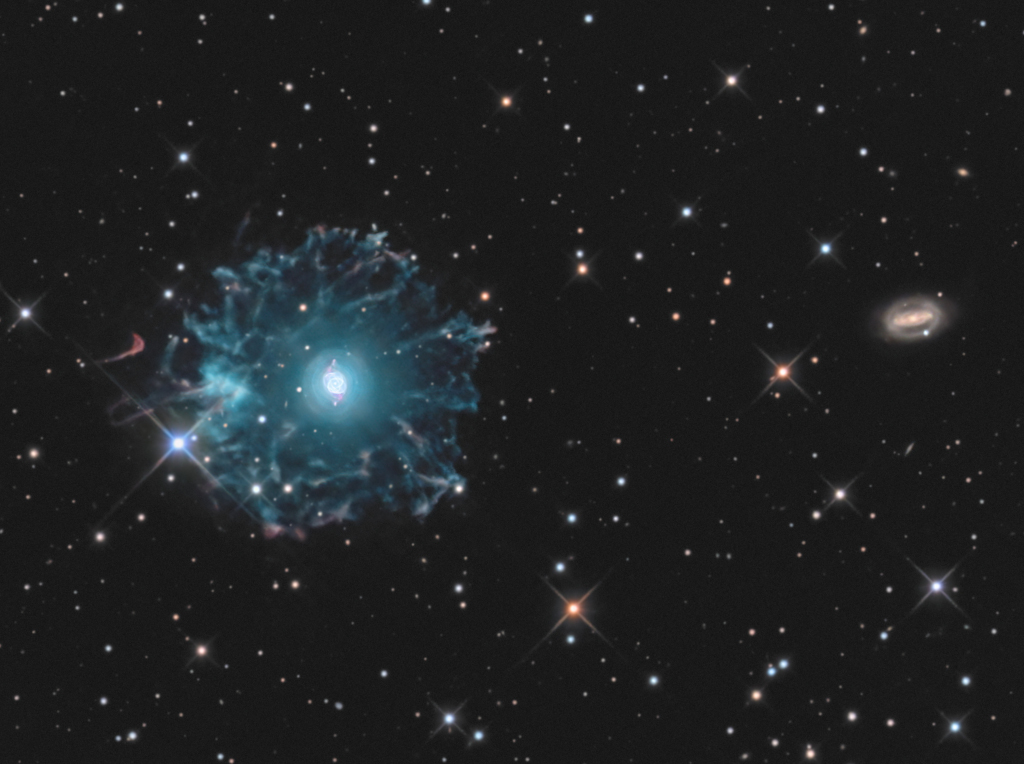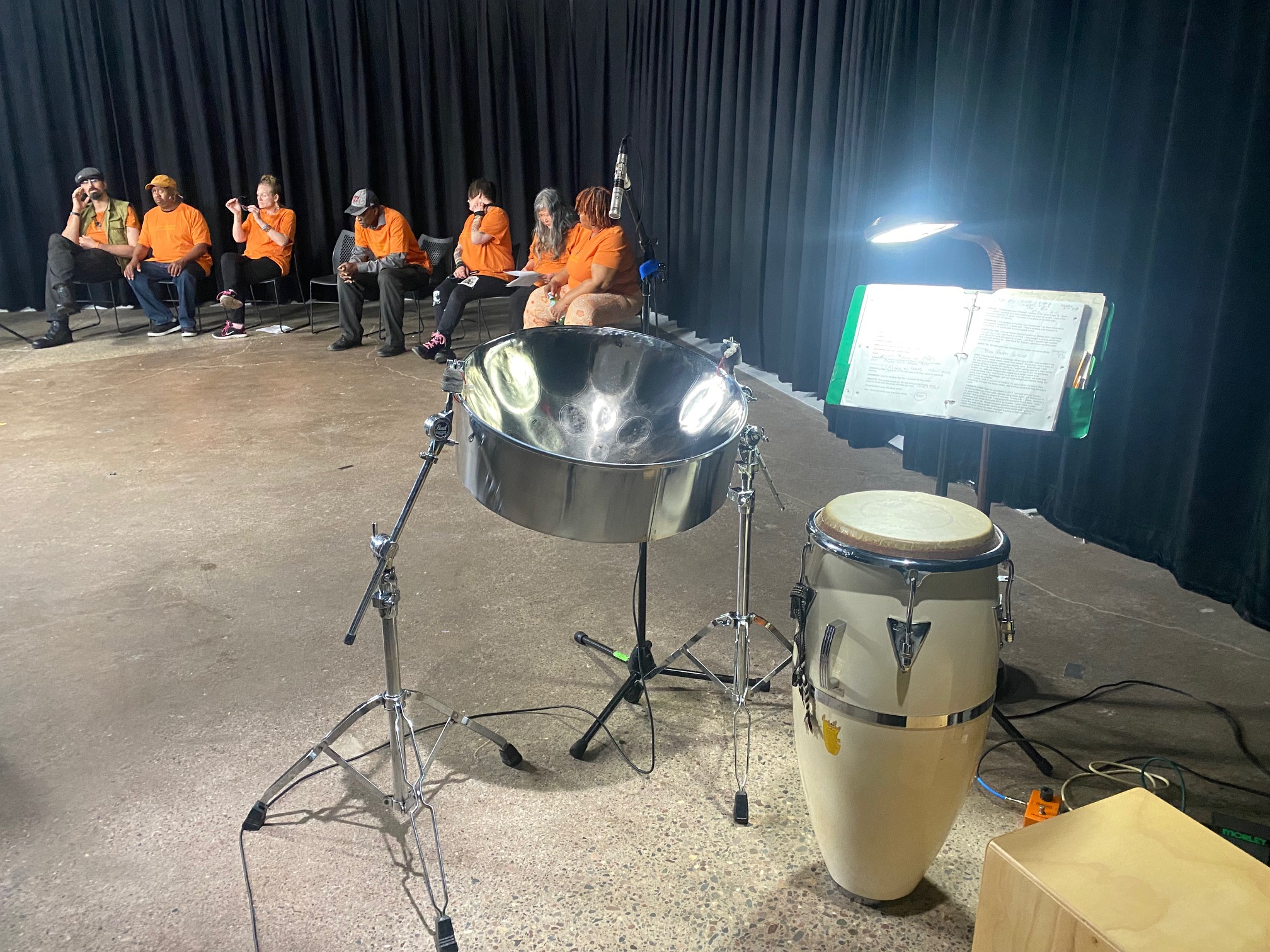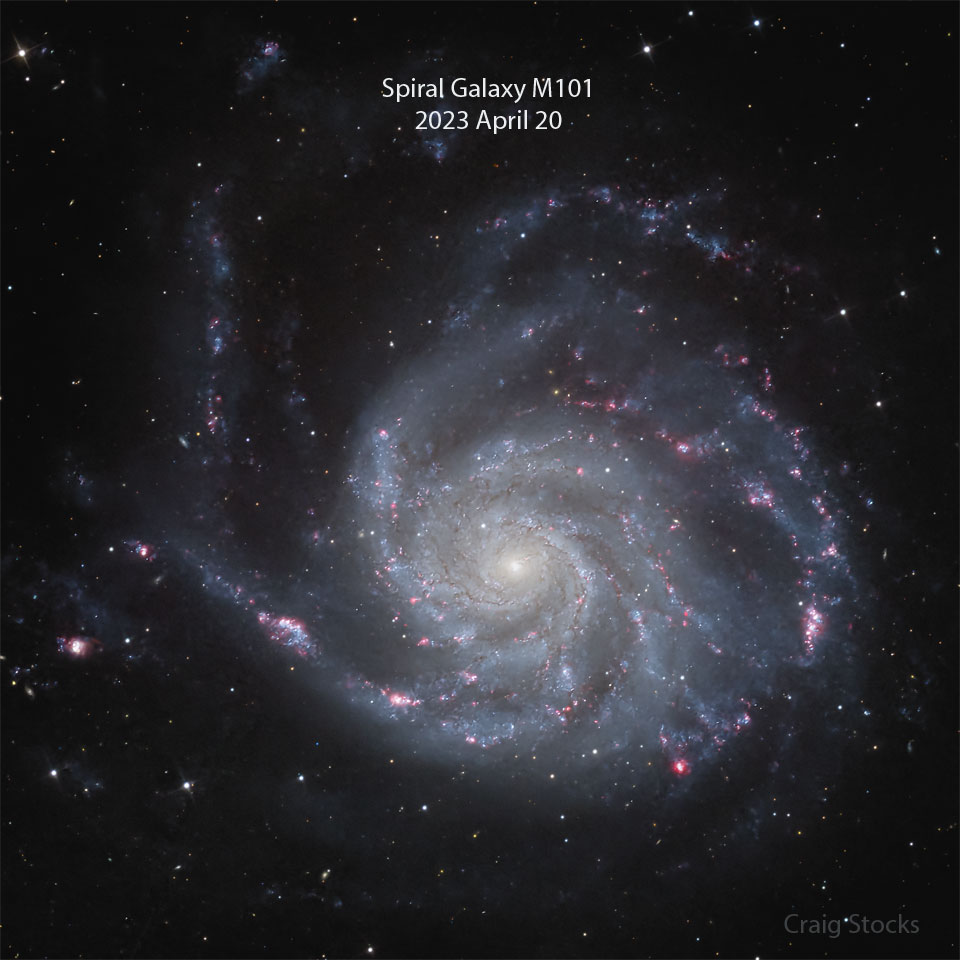Blog
Bulerías Form
Reflecting its origin as a remate to the soleares, the underlying form of bulerías is simple. Bulerías cantes consist of three or four eight-syllable lines, and there is great flexibility in the way artists choose to treat those three or four lines. The singer may give one or two compáses to each line, or they can stretch them out, decorating each syllable with melismatic flourishes, or repeating them for rhythmic or emotional effect.
The guitarist follows the singer’s phrasing, underscoring the implied harmony, adding falsetas and maintaining the rhythmic pulse. Performing without a singer, a guitarist will string together a series of falsetas in a way that may imitate the form of letras.
A dancer will usually dance while the letra is being sung, and also dance between letras. A dancer can also dance during short breaks within the letras (a respira for the singer; a remate for the dancer). A dancer will use transitional phrases, including palmas en contra tiempo, remates and llamadas, and desplante llamadas to move from one section of the dance to another, cueing the musicians at each transition.
There are distinctive differences in dance styles for the bulerías depending on where and when the dance is performed. If it is a professional performance at a concert or theatrical show, the dancer will include 1 to 2 letras, add an escobilla, and perform an ornate traveling exit, the salida (also often called the cierre). If the dancer is performing bulerías at a flamenco party (juerga), small event, or with family and friends, the dance takes on a more personal touch that may or may not include all of the above named sections. See below for a more detailed description of each section of the dance.
Soulful diva Tina Turner, who had a lengthy run of ’60s and ’70s R&B hits and struck major pop stardom in the ’80s, died Wednesday in Switzerland. She was 83.
“Tina Turner, the ‘Queen of Rock’n Roll’ has died peacefully today at the age of 83 after a long illness in her home in Kusnacht near Zurich, Switzerland. With her, the world loses a music legend and a role model,” her representative said in a statement to Variety.
More than a decade after her crossover hit “Proud Mary” with husband Ike, Tina Turner ascended to the pinnacle of pop fame with the 1984 Capitol Records album “Private Dancer.” The collection, which spawned a trio of top-10 pop hits, sold five million copies and garnered four Grammy Awards. Though she never matched that breakthrough solo success, she recorded and toured profitably until her retirement in 2000.
Raw-voiced, leggy, peripatetic and provocative onstage, the magnetic Turner segued effortlessly into bigscreen roles, appearing as the Acid Queen in Ken Russell’s 1975 adaptation of the Who’s rock opera “Tommy” and as villainess Aunty Entity in George Miller’s action sequel “Mad Max Beyond Thunderdome.” She sang the title song, penned by Bono and the Edge of U2, for the 1995 James Bond pic “GoldenEye.”
The winner of eight Grammys, Turner was a 1991 Rock and Roll Hall of Fame inductee, and was recognized at the 2005 Kennedy Center Honors for her career achievements.
Turner was still in her teens when she began recording with future husband Ike Turner; their tumultuous partnership produced 15 years of popular singles, culminating in the 1971 crossover smash “Proud Mary.” However, in 1976 the vocalist fled her abusive marriage; she detailed her violence-scarred relationship in the 1986 bestseller “I, Tina,” which served as the basis for the 1993 biopic “What’s Love Got to Do With It.”
She was born Anna Mae Bullock in the farming community of Nutbush, Tenn. (a locale she would commemorate in the self-penned 1973 song “Nutbush City Limits”). With older her sister Ruby, she was shuttled between various relatives as a child; her mother left her abusive father when she was 11. At 16, the girls were reunited with their mother in St. Louis.
more...The 5th and final weekend of The Defeat of Jesse James at the History Theater. Tonight Thursday May 25th 2023 at 730pm. Featuring music with Raymond Berg, Kam Markworth, Christian Wheeler and mick laBriola.

The Cat’s Eye Nebula (NGC 6543) is one of the best known planetary nebulae in the sky. Its more familiar outlines are seen in the brighter central region of the nebula in this impressive wide-angle view. But this wide and deep image combining data from two telescopes also reveals its extremely faint outer halo. At an estimated distance of 3,000 light-years, the faint outer halo is over 5 light-years across. Planetary nebulae have long been appreciated as a final phase in the life of a sun-like star. More recently, some planetary nebulae are found to have halos like this one, likely formed of material shrugged off during earlier episodes in the star’s evolution. While the planetary nebula phase is thought to last for around 10,000 years, astronomers estimate the age of the outer filamentary portions of this halo to be 50,000 to 90,000 years. Visible on the right, some 50 million light-years beyond the watchful planetary nebula, lies spiral galaxy NGC 6552.

Wallace Roney (May 25, 1960 – March 31, 2020) was an American jazz (hard bop and post-bop) trumpeter. He has won 1 Grammy award and has two nominations.
Roney took lessons from Clark Terry and Dizzy Gillespie and studied with Miles Davis from 1985 until the latter’s death in 1991. Wallace credited Davis as having helped to challenge and shape his creative approach to life as well as being his music instructor, mentor, and friend; he was the only trumpet player Davis personally mentored.
Roney was born in Philadelphia. He attended Howard Universityand Berklee College of Music in Boston, Massachusetts, after graduating from the Duke Ellington School of the Arts of the D. C. Public Schools, where he studied trumpet with Langston Fitzgerald of the Baltimore Symphony Orchestra. Found to have perfect pitch at the age of four, Wallace began his musical and trumpet studies at Philadelphia’s Settlement School of Music.
He studied with trumpeter Sigmund Hering of the Philadelphia Orchestra for three years. Hering regularly presented Wallace at recitals at the Settlement School, and with the Philadelphia Brass Ensemble, during his studies in Philadelphia.
more...Lincoln Barrington “Sugar” Minott (25 May 1956 – 10 July 2010) was a Jamaican reggae singer, producer and sound-system operator.
After working as a selector on the Sound of Silence Keystone sound system, and then his own Gathering of Youth system, he began his singing career as part of The African Brothers in 1969, along with Tony Tuffand Derrick Howard. The group released several singles in the first half of the 1970s on labels such as Micron and their own Ital label, and were an early example of the Rastafari movement‘s influence on the Jamaican music scene, taking a clear lead from The Abyssinians. After recording “Mysterious Nature” for producer Rupie Edwards, the group recorded 1974’s “No Cup No Broke” for Studio One, breaking up shortly after. Minott then teamed up with the producer Clement “Coxsone” Dodd, as studio apprentice at Dodd’s Studio One, working as a singer, guitarist and percussionist, and soon began recording his own singles. Minott developed a talent for writing new songs to fit over existing rhythms (which at the time was common when singers performed live, but rare in the studio), often proving more popular than the original songs, pioneering an approach that would be central to the emerging dancehall style.
more...Norman Gary Foster (born May 25, 1936) is an American musician who plays saxophone, clarinet, and flute. He is considered a crossover artist, performing jazz, pop, and classical music. He has been prominent in the film, television, and music industries for five decades, having performed on over 500 movie scores and with over 200 orchestras.
He has recorded on numerous Grammy, Academy Award, Emmy, and Golden Globe winning media and soundtracks for artists and composers such as Carol Burnett, Bob Dylan, Barbra Streisand, Mel Torme, Toshiko Akiyoshi, Frank Sinatra, Pat Williams, John Williams, Natalie Cole, Jerry Fielding, Cal Tjader, Marty Paich, and Michael Bublé.
Foster received the Most Valuable Player Award for woodwind doubling from The Recording Academy.
Gary Foster was born in Leavenworth, Kansas, in 1936. He started on the clarinet at age thirteen. His first musical inspiration was Olin Parker, a school music director and teacher who introduced him to the music of Count Basie, Woody Herman, and many other types of music. He listened closely to the Woody Herman Orchestra’s recording of “Four Brothers”, which featured saxophonists Stan Getz, Zoot Sims, and Serge Chaloff.
more...Marshall Belford Allen (born May 25, 1924) is an American free jazz and avant-garde jazz alto saxophone player. He also performs on flute, oboe, piccolo, and EWI (an electronic valve instrument made by Steiner, Crumar company).
Allen is best known for his work with Sun Ra, having recorded and performed mostly in this context since the late 1950s, and having led The Sun Ra Arkestra since 1993, after Sun Ra’s death. Critic Jason Ankeny describes Marshall as “one of the most distinctive and original saxophonists of the postwar era.”
Marshall Allen was born in Louisville, Kentucky, United States.
During the Second World War he enlisted in the 92nd Infantry Division and was stationed in France. Allen studied alto saxophone in Paris and played in Europe with Art Simmons and James Moody.
He is best known for his mastery of explosive, jarring, chaotic sound effects on the alto saxophone. Some have referred to this as a “pyrotechnic” playing style. He has said that he “wanted to play on a broader sound basis rather than on chords” (1971 interview with Tam Fiofori)). The opportunity came through his long association with Sun Ra, with whom he performed almost exclusively from 1958 to Ra’s death in 1993, although he did record outside The Sun Ra Arkestra, with Paul Bley‘s group in 1964 and Olatunji‘s group during the mid-1960s. Critic Scott Yanow has described Allen’s playing as “Johnny Hodges from another dimension”.
more...Jimmy Hamilton (May 25, 1917 – September 20, 1994) was an American jazz clarinetist and saxophonist, who was a member of the Duke Ellington Orchestra. Hamilton was born in Dillon, South Carolina, United States, and grew up in Philadelphia. Having learned to play piano and brass instruments, in the 1930s he started playing the latter in local bands before switching to clarinet and saxophone. During this time he studied with clarinet teacher Leon Russianoff. In 1939, he played with Lucky Millinder, Jimmy Mundy, and Bill Doggett, going on to join the Teddy Wilson sextet in 1940. After two years with Wilson, he played with Eddie Heywood and Yank Porter.
more...Teaching a Rhythm Roots Workshop Residency at Cerenity Humboldt Senior Care center in St Paul. (https://cerenityseniorcare.org/cerenity-senior-care-humboldt-st-paul-mn/). 6th in a series of 9 workshops exploring cultural rhythms from an array of world traditions.

Zamya Theater performs Challenge to Change today Wednesday May 24th 9am at the Dorthy Day Center of Catholic Charities in St Paul. Music provided by mick laBriola.

A nearby star has exploded and humanity’s telescopes are turning to monitor it. The supernova, dubbed SN 2023ixf, was discovered by Japanese astronomer Koichi Itagaki three days ago and subsequently located on automated images from the Zwicky Transient Facility two days earlier. SN 2023ixf occurred in the photogenic Pinwheel Galaxy M101, which, being only about 21 million light years away, makes it the closest supernova seen in the past five years, the second closest in the past 10 years, and the second supernova found in M101 in the past 15 years. Rapid follow up observations already indicate that SN 2023ixf is a Type II supernova, an explosion that occurs after a massive star runs out of nuclear fuel and collapses. The featured image shows home spiral galaxy two days ago with the supernova highlighted, while the roll-over image shows the same galaxy a month before. SN 2023ixf will likely brighten and remain visible to telescopes for months. Studying such a close and young Type II supernova may yield new clues about massive stars and how they explode.

more...
Max Bennett (May 24, 1928 – September 14, 2018) was an American jazz bassist and session musician. Bennett grew up in Kansas City, Missouri and Oskaloosa, Iowa, and went to college in Iowa.
His first professional gig was with Herbie Fields in 1949, and following this he played with Georgie Auld, Terry Gibbs, and Charlie Ventura. He served in the Army during the Korean War from 1951 to 1953, and then played with Stan Kenton before moving to Los Angeles. There he played regularly at the Lighthouse Cafe with his own ensemble, and played behind such vocalists as Peggy Lee, Ella Fitzgerald, Joni Mitchell and Joan Baez through the 1970s. He also recorded with Charlie Mariano, Conte Candoli, Bob Cooper, Bill Holman, Stan Levey, Lou Levy, Coleman Hawkins and Jack Montrose.
Bennett recorded under his own name from the late 1950s and did extensive work as a composer and studio musician in addition to jazz playing. Often associated with The Wrecking Crew, he performed on many records by The Monkees and The Partridge Family.
more...Bob Dylan (legally Robert Dylan, born Robert Allen Zimmerman, May 24, 1941) is an American singer-songwriter. Often regarded as one of the greatest songwriters of all time, Dylan has been a major figure in popular culture during a career spanning more than 60 years. Much of his most celebrated work dates from the 1960s, when songs such as “Blowin’ in the Wind” (1963) and “The Times They Are a-Changin’“(1964) became anthems for the civil rights and antiwar movements. His lyrics during this period incorporated a range of political, social, philosophical, and literary influences, defying pop music conventions and appealing to the burgeoning counterculture.
Dylan was born and raised in St. Louis County, Minnesota. Following his self-titled debut album in 1962, which comprised mainly traditional folk songs, he made his breakthrough as a songwriter with the release of The Freewheelin’ Bob Dylan the following year. The album features “Blowin’ in the Wind” and the thematically complex “A Hard Rain’s a-Gonna Fall“. Many of his songs adapted the tunes and phraseology of older folk songs. He went on to release the politically charged The Times They Are a-Changin’ and the more lyrically abstract and introspective Another Side of Bob Dylan in 1964. In 1965 and 1966, Dylan drew controversyamong folk purists when he adopted electrically amplified rock instrumentation, and in the space of 15 months recorded three of the most important and influential rock albums of the 1960s: Bringing It All Back Home, Highway 61 Revisited (both 1965) and Blonde on Blonde (1966). His six-minute single “Like a Rolling Stone” (1965) expanded commercial and creative boundaries in popular music.
In July 1966, a motorcycle accident led to Dylan’s withdrawal from touring. During this period, he recorded a large body of songs with members of the Band, who had previously backed him on tour. These recordings were released as the collaborative album The Basement Tapes in 1975. In the late 1960s and early 1970s, Dylan explored country music and rural themes in John Wesley Harding (1967), Nashville Skyline (1969), and New Morning (1970). In 1975, he released Blood on the Tracks, which many saw as a return to form. In the late 1970s, he became a born-again Christian and released a series of albums of contemporary gospel music before returning to his more familiar rock-based idiom in the early 1980s. Dylan’s 1997 album Time Out of Mind marked the beginning of a renaissance for his career. He has released five critically acclaimed albums of original material since then, the most recent being Rough and Rowdy Ways (2020). He also recorded a series of three albums in the 2010s comprising versions of traditional American standards, especially songs recorded by Frank Sinatra. Dylan has toured continuously since the late 1980s on what has become known as the Never Ending Tour.
Since 1994, Dylan has published nine books of paintings and drawings, and his work has been exhibited in major art galleries. He has sold more than 145 million records, making him one of the best-selling musicians of all time. He has received numerous awards, including the Presidential Medal of Freedom, ten Grammy Awards, a Golden Globe Award and an Academy Award. Dylan has been inducted into the Rock and Roll Hall of Fame, Nashville Songwriters Hall of Fame and the Songwriters Hall of Fame. The Pulitzer Prize Board in 2008 awarded him a special citation for “his profound impact on popular music and American culture, marked by lyrical compositions of extraordinary poetic power”. In 2016, Dylan was awarded the Nobel Prize in Literature “for having created new poetic expressions within the great American song tradition”.
more...Archie Shepp (born May 24, 1937) is an American jazz saxophonist, educator and playwright who since the 1960s has played a central part in the development of avant-garde jazz.
Shepp was born in Fort Lauderdale, Florida, but raised in Philadelphia, Pennsylvania. He studied piano, clarinet and alto saxophone before narrowing his focus to tenor saxophone. He occasionally plays soprano saxophone as well. He studied drama at Goddard College from 1955 to 1959.
He played in a Latin jazz band for a short time before joining the band of avant-garde pianist Cecil Taylor. Shepp’s first recording under his own name, Archie Shepp – Bill Dixon Quartet, was released on Savoy Records in 1962 and featured a composition by Ornette Coleman. In 1962, he performed with Dixon at the 8th World Festival of Youth and Students in Helsinki, Finland. Along with alto saxophonist John Tchicai and trumpeter Don Cherry, he formed the New York Contemporary Five. John Coltrane‘s admiration for Shepp led to recordings for Impulse! Records, the first of which was Four for Trane in 1964, an album of mainly Coltrane compositions on which he was joined by Tchicai, trombonist Roswell Rudd, trumpeter Alan Shorter, bassist Reggie Workman and drummer Charles Moffett.
more...More Posts
- World Music with Songhoy Blues
- Daily Roots with Johnny Osborne
- The Cosmos with NGC 4100
- Jim Capaldi Day
- Arthur “Big Boy” Crudup Day
- World Music with Cayetano Moreno Castro
- Daily Roots with Cornell Campbell
- The Cosmos with NGC 6503
- Keith Moon Day
- Terje Rypdal Day
- Gil Coggins Day
- World Music with AL-Mawror
- Daily Roots with Carlton and the Shoes
- The Cosmos with N159W
- Malachi Favors Day
- John Lee Hooker Day
- World Fusion with Azam Ali
- Daily Roots with Jackie Mittoo
- The Cosmos with IC 1898
- Art Farmer Day